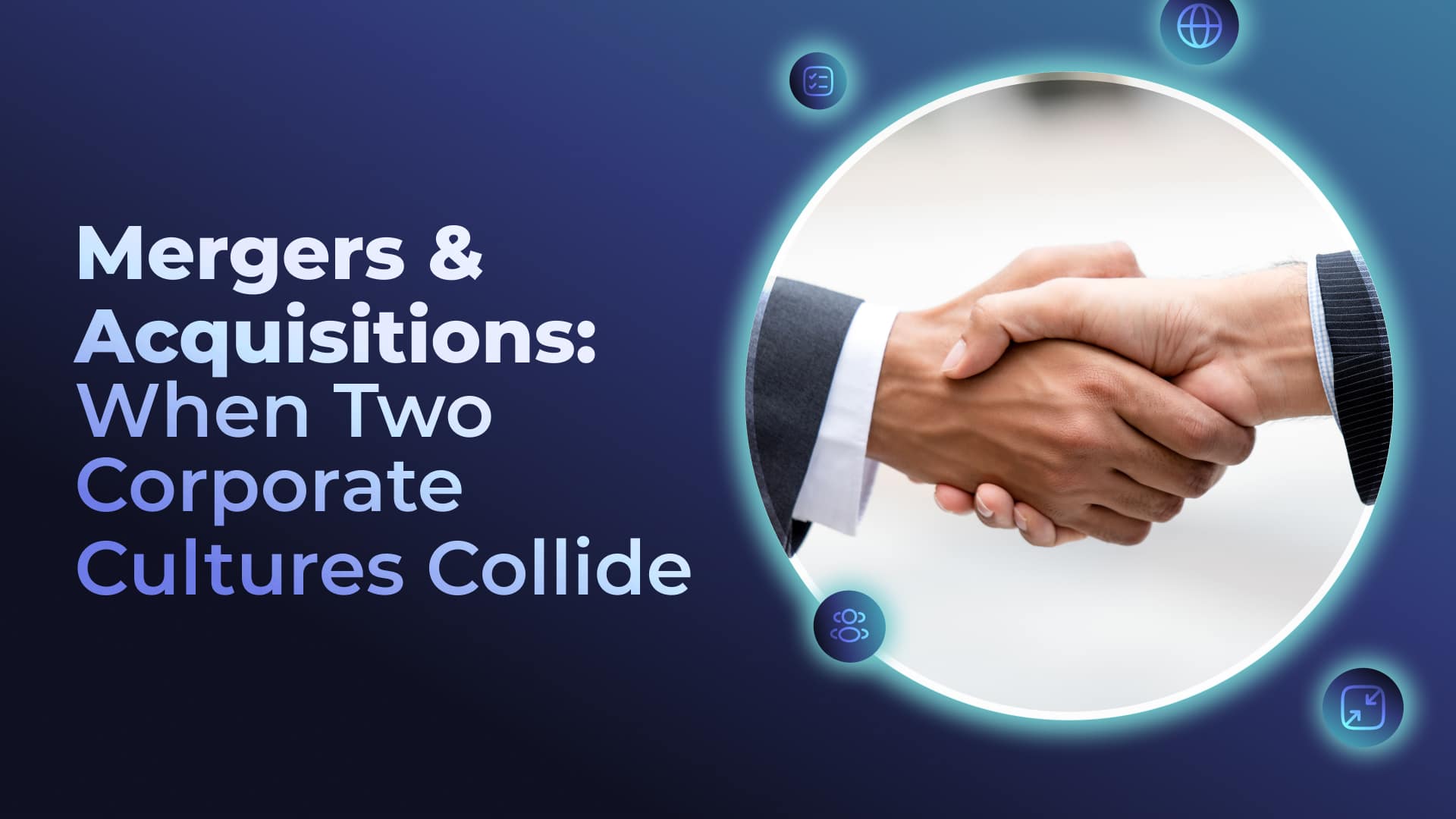Mergers & Acquisitions: When Two Corporate Cultures Collide
In the world of business, mergers and acquisitions (M&A) are strategic moves often made to increase market share, expand into new markets, or acquire new technologies. While the financial and operational aspects of M&A are extensively analyzed, the impact on corporate culture often takes a back seat. However, the collision of two distinct corporate cultures can make or break the success of the merger. This blog will explore the common cultural challenges in M&A and offer solutions to effectively merge two corporate cultures.
The Impact of M&A on Corporate Culture
Layoffs and Job Security
One of the most immediate and visible impacts of a merger or acquisition is layoffs. Redundant positions, especially in administrative and support roles, often lead to significant job cuts. This not only affects the employees who are let go but also creates a ripple effect of fear and uncertainty among the remaining workforces. Employees may fear for their job security, leading to decreased morale and productivity.
Management Styles
When two companies merge, they bring with them different management styles. One company might have a hierarchical structure with top-down decision-making, while the other may promote a flat organizational structure with decentralized decision-making. These differing management styles can cause confusion and conflict, making it difficult for employees to adapt.
Value Systems
Corporate values are the core beliefs and principles that guide a company’s actions and decision-making. When two companies with different value systems merge, it can lead to conflicts and misunderstandings. For example, if one company values innovation and risk-taking while the other prioritizes stability and caution, employees may struggle to align their behaviors and attitudes with the new corporate direction.
Policies and Procedures
Every company has its own set of policies and procedures that govern how work is done. These can range from HR policies and IT protocols to customer service guidelines and operational workflows. When two companies merge, aligning these policies and procedures is a significant challenge. Employees may feel overwhelmed by the changes, leading to resistance and decreased efficiency.
Combating Cultural Challenges in M&A
While the cultural challenges in M&A are daunting, they are not insurmountable. Here are some strategies to effectively merge two corporate cultures:
Open and Honest Communication
Clear, transparent communication is crucial during a merger or acquisition. Employees need to be informed about the reasons behind the merger, the benefits it will bring, and how it will impact their roles. Regular updates and open forums for questions and concerns can help alleviate fears and build trust.
Transparency
Transparency goes hand in hand with communication. Being honest about the challenges and uncertainties can help manage employee expectations. Transparency in decision-making processes and the rationale behind layoffs or structural changes can reduce speculation and anxiety.
Clear Goals and Expectations
Setting clear goals and expectations for the merged entity is essential. This includes defining the new company’s vision, mission, and values. Employees need to understand what is expected of them and how they can contribute to the company’s success. This clarity can help align behaviors and attitudes with the new corporate culture.
Standardized Policies Across All Departments
Standardizing policies and procedures across all departments can help create a sense of unity and consistency. This involves reviewing existing policies from both companies and developing a unified set of guidelines that reflect the best practices from each. Training programs and workshops can help employees adapt to the new policies and procedures.
Building a Unified Corporate Culture
Building a unified corporate culture requires a deliberate and strategic approach. This involves identifying the strengths of each company’s culture and finding ways to integrate them. Celebrating small wins and recognizing employees who embody the new cultural values can reinforce the desired behaviors and attitudes.
Leveraging Technology for Cultural Integration
Technology can play a significant role in facilitating cultural integration. Platforms that support real-time communication, collaboration, and feedback can help bridge the gap between different corporate cultures. Tools that provide transparency in performance management and employee engagement can foster a sense of belonging and alignment.
Building a Successful Future Together
Mergers and acquisitions are complex endeavors that require careful consideration of both financial and cultural factors. The collision of two corporate cultures can create significant challenges, but with proactive strategies, these challenges can be effectively managed. Open communication, transparency, clear goals, standardized policies, and leveraging technology are key to successfully merging corporate cultures. By focusing on these areas, companies can create a cohesive and unified workforce that drives the success of the merger.



